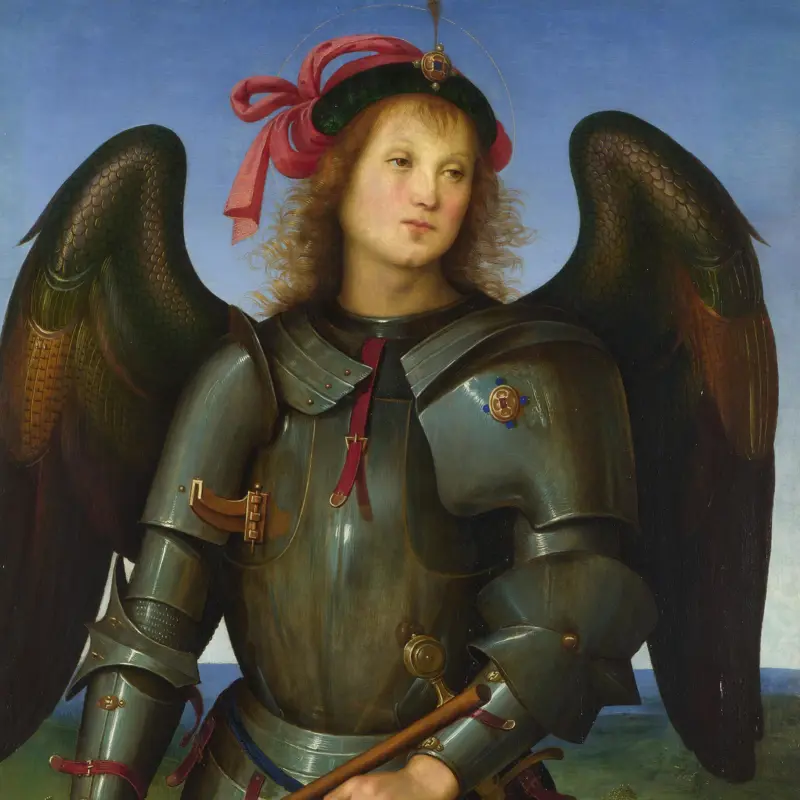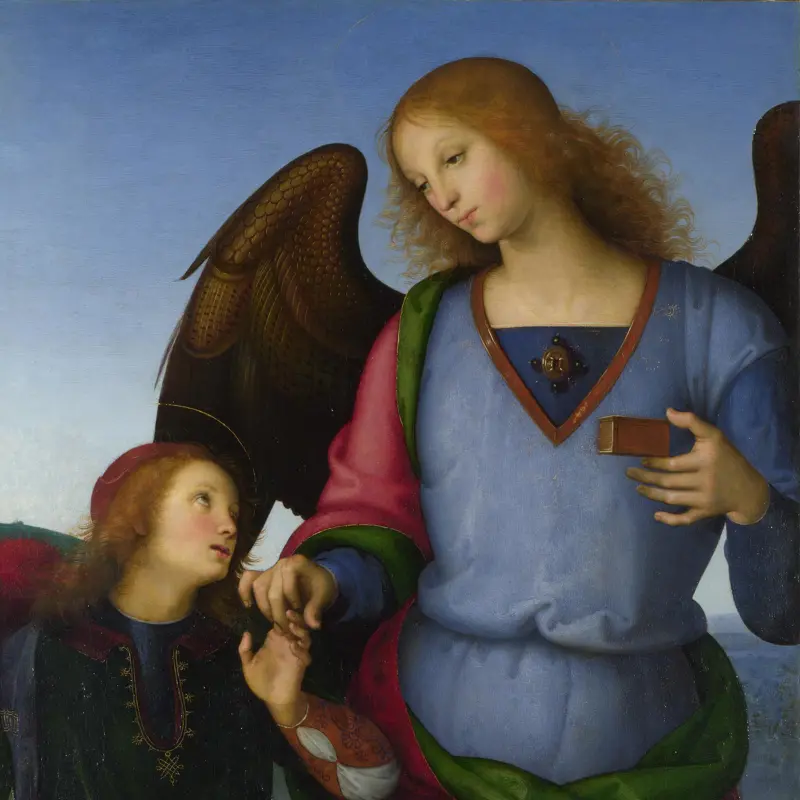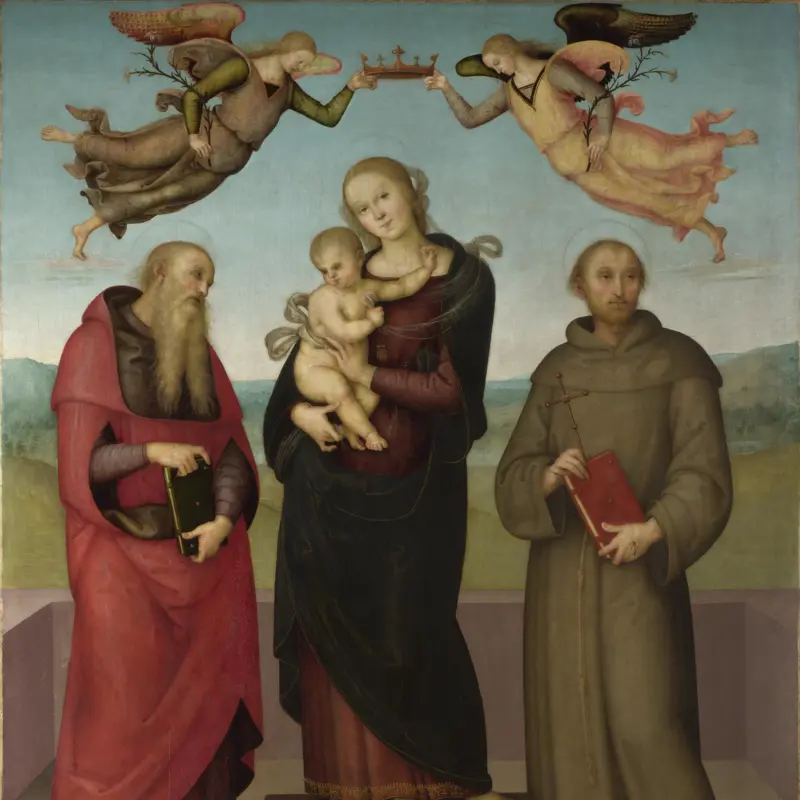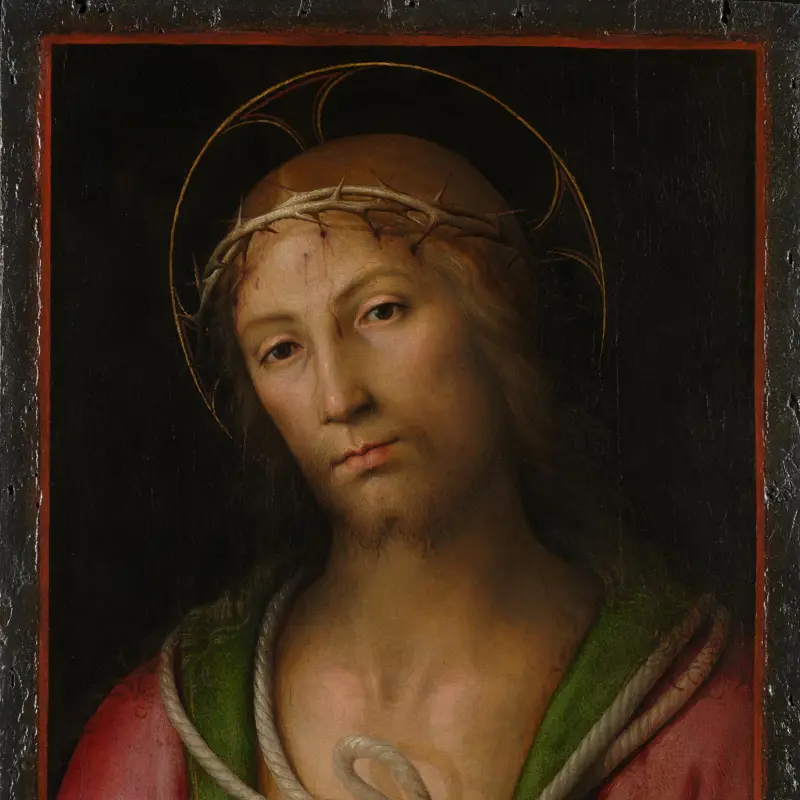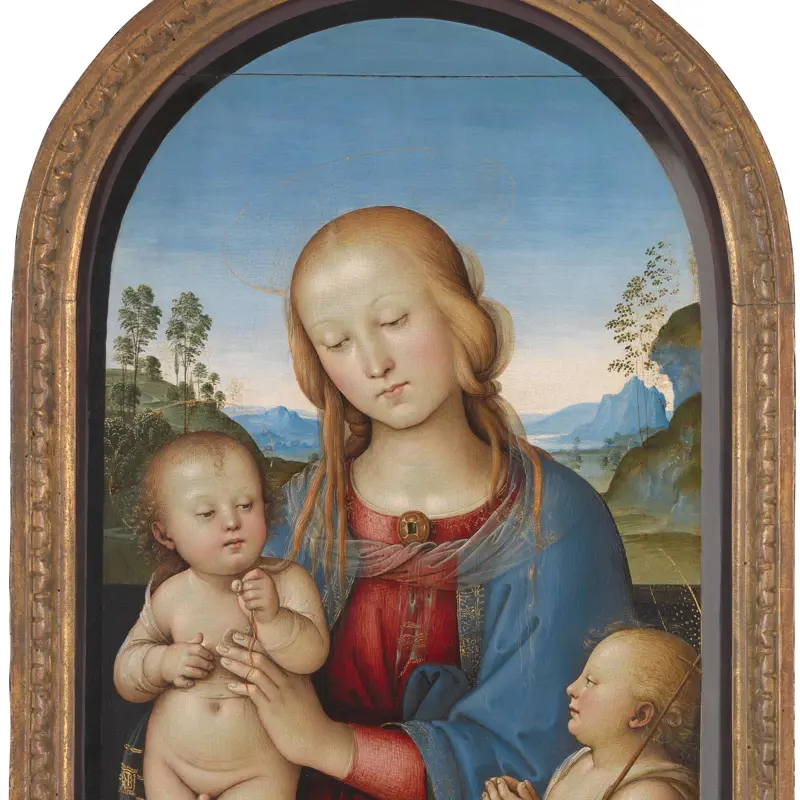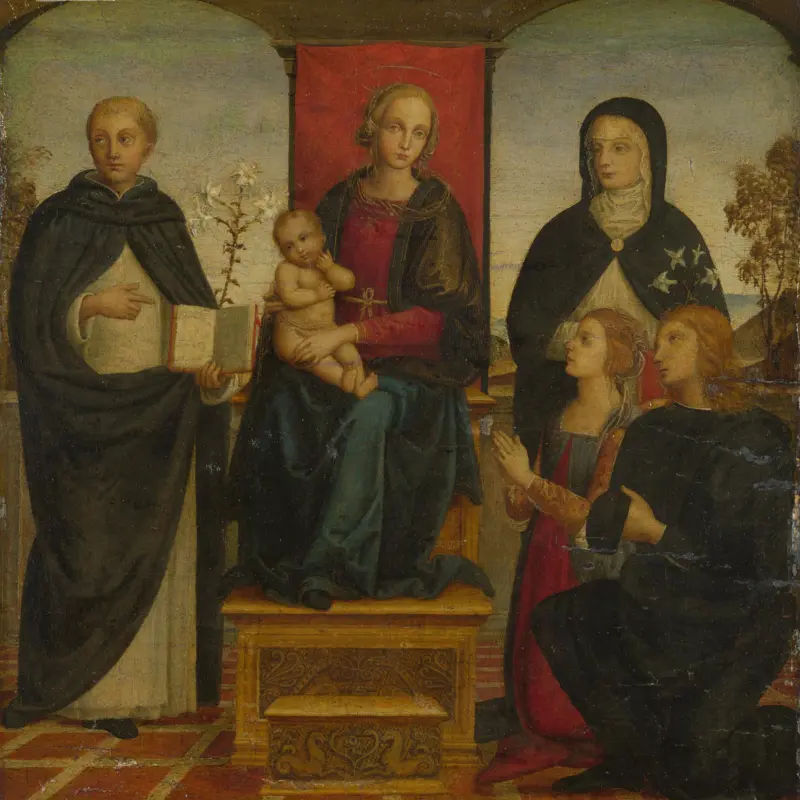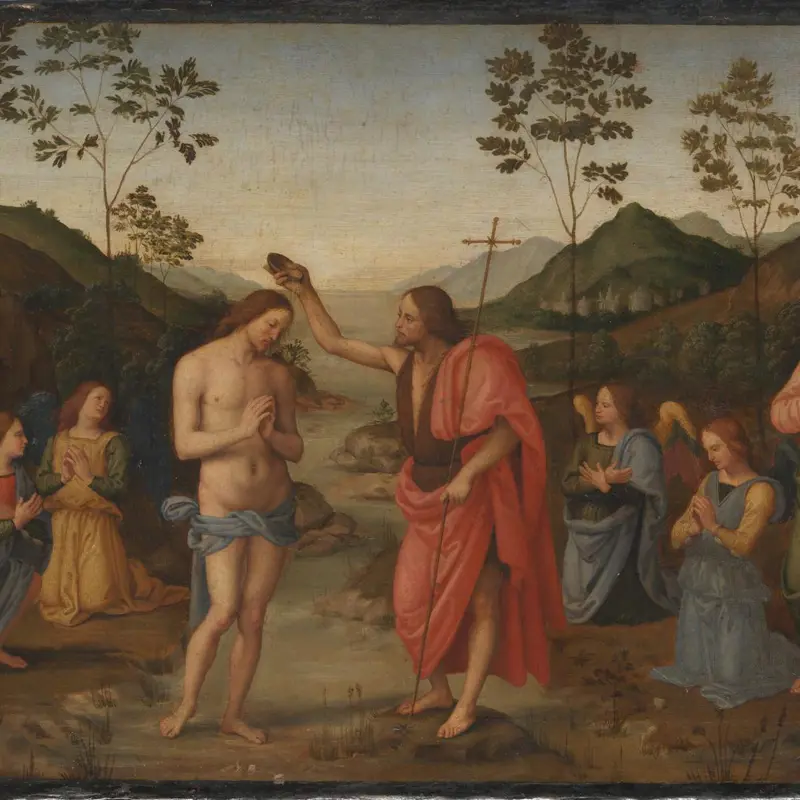Pietro Perugino, 'Three Panels from an Altarpiece, Certosa', about 1496-1500
About the group
Overview
Perugino painted this altarpiece for the Duke of Milan, Ludovico Sforza. It stood in the side chapel dedicated to the Archangel Michael in the Carthusian monastery (also known as a charterhouse or certosa) in Pavia, a town outside Milan. The Duke was captured by invading French forces in 1499, and the altarpiece was completed in the early sixteenth century by two other painters: Fra Bartolommeo and Mariotto Albertinelli.
Our panels formed the lower tier of two in this large-scale construction. The upper tier showed the Annunciation: the Archangel Gabriel, on one panel, giving the Virgin Mary, on another panel, the news that she would conceive the son of God. Between these panels was an image of God in glory, which is still in the church.
The painting shows Perugino’s skill in working with oil paint. Because oil paint dries slowly, it is possible to blend different tones together to create subtle transitions, particularly evident here in the figures' flesh – their cheeks, for example, have a rosy blush.
Key facts
Details
- Full title
- Three Panels from an Altarpiece, Certosa
- Artist
- Pietro Perugino
- Artist dates
- living 1469; died 1523
- Date made
- about 1496-1500
- Inventory number
- NG288
- Collection
- Main Collection
About this record
If you know more about this work or have spotted an error, please contact us. Please note that exhibition histories are listed from 2009 onwards. Bibliographies may not be complete; more comprehensive information is available in the National Gallery Library.
Works in the group
-
In this painting Perugino has stressed the humility of the Virgin Mary, positioning her directly in a grassy meadow as she kneels before the infant Christ, a chubby baby. He is supported by an angel who looks towards Mary, sharing in her knowledge of his divinity.This was the central panel of the...
-
This panel is one of three that come from the lower tier of an altarpiece made for the Duke of Milan (the other two are also in our collection). The Archangel Michael stands triumphant after his cosmic battle with the devil (Revelation 12: 16). A pair of scales, hanging on the tree stump to the l...
-
This panel is one of three that come from the lower tier of an altarpiece made for the Duke of Milan; the other two are also in the National Gallery’s collection.The Archangel Raphael is the hero of the Book of Tobit, which is part of the Roman Catholic Bible. Tobit sent his son Tobias on a long...


